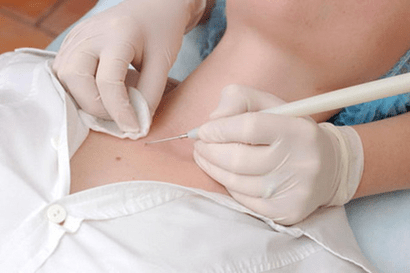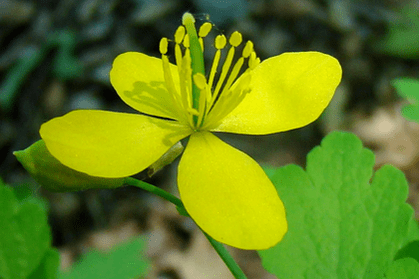
Human papillomavirus (HPV) is one of the most common viruses in the world. It infects the skin and causes growths on it. Skin lesions may be pointed, flat, or domed, protruding from the surface, or growing into the skin.
HPV is also called the wart virus. The growth of warts can be single or multiple, like cauliflower. They can affect any part of the body, including the genitals (spiky papillomas). Certain types of infection, such as human papillomavirus 16, can lead to the development of cancer, particularly cervical cancer.
Human papillomas can be present in the body for years and cause no external symptoms. After appearing on the surface of the skin, papillomas can disappear on their own, without treatment and pain, however, this does not happen instantly, but in, for example, six months.
Human papilloma, disease prevention
Warts are contagious, they are transmitted by contact with infected skin, papillomas in intimate places are sexually transmitted. The risk of transmitting the infection to sexual partners can be reduced by using condoms. However, this is not 100% protection, as disease transmission can occur when unprotected areas of skin come into contact. During the period of papillomavirus activity, it is better to refuse sexual contact altogether. Spouses should be completely informed of the presence of HPV.
Papillomas in other areas of the skin, for example, on the hands and soles of the feet, can also be transmitted by contact: by shaking hands, touching the handrails of an infected simulator, walking barefoot in the bathroom, using other people's towels, linens or towels. cosmetics. In this case, disease prevention can be in the form of adherence to personal hygiene.
Sometimes the human papillomavirus reactivates. In some people, these are rare and isolated cases, while others suffer from multiple papillomas repeatedly. It depends on the nature of the virus and the state of the human body. Weak immunity, hormonal problems, stress and an excessive lifestyle with bad habits contribute to an increase in viral activity.
To prevent recurrent papillomavirus outbreaks, the immune system must be strengthened. This requires proper nutrition, exercise, good sleep, refusal of alcohol and tobacco smoking, control of stressful situations. Taking care of the health of the body will allow you to avoid relapses and, over time, completely cope with the papilloma.

How to treat papillomas
A cure for the destruction of the papillomavirus has not yet been found. However, human papillomas are in most cases removed from the body and without treatment, by the efforts of the immune system. Although the human papillomavirus itself cannot be cured with drugs, the formation of warts that appear as a result of infection is treatable and quite effective. Papilloma removal may be necessary many times, because if HPV remains in the body, they will appear again and again.
There are various medical and traditional methods of treating papillomas. For example, removing the affected skin layer with salicylic acid or cryotherapy (freezing with liquid nitrogen). Skin may change color and texture for a short time after exposure to nitrogen, but recovers quickly. One way to combat papillomas is immunotherapy, which strengthens the body's defenses. With this method of treatment, antibodies (vaccination) are injected into the body, which destroy the virus
Acid cauterization and surgical removal with a laser or scalpel are also performed. Pointy papillomas by the listed methods are removed in medical institutions, during several repeated procedures. It should also be noted that medical methods of treating papillomas are much more effective than traditional ones.
Laser surgery is used when other methods have not helped solve the problem, or it is necessary to get rid of the papilloma quickly. Laser therapy can be applied to any part of the body, with its help it is possible to remove papillomas in intimate places. The laser works selectively without damaging healthy skin or creating wounds. Slight redness or hyperpigmentation may occur, but this resolves quickly and the skin heals. Depending on the nature and size of the neoplasm, 1-3 laser procedures may be required.
After successful treatment, you should visit your doctor every year for preventive checks. In accessible places, inspection for the presence of characteristic growths is carried out independently. It is also advisable to take preventive measures against relapse of the disease, to strengthen the immune system, physical endurance and resistance to stress.

Papilloma, treatment with traditional medicine
Along with medical methods to treat the external signs of human papilloma in the body, there are folk remedies that are proven to speed up recovery. Natural recipes should be used for a long time and regularly, only in this case you can achieve stable positive results.
- Traditionally, folk medicine advises to get rid of papillomas with fresh celandine juice. A cut is made on the stem of the plant, and the affected skin is smeared with the released "milk" 2-3 times a day. Very often, papillomas disappear within a week or less, but sometimes a longer period of time is required.
- Known for its bactericidal properties, garlic can also be used to remove papillomas. Garlic juice is smeared with papillomas several times a day. You can apply a small plate to the affected skin area at night and fix it with an adhesive tape. Discard the garlic in the morning, repeating several times if necessary.
- Mix the garlic pulp with vinegar, add a little flour to make the mixture smooth, apply to papillomas, wrap in plastic wrap and leave overnight. In this case, areas of healthy skin should be protected with adhesive tape.
- Cool the thyme broth, infuse for 40-60 minutes, cool slightly and use in the form of a lotion. This will require 10 or more treatments. The cooled broth should be heated to a temperature of about 39 ° C.
- Steam the skin and apply the softened propolis. Secure with plaster for 2-3 days. Then the procedure can be repeated.
- Apply fresh pieces of Kalanchoe leaves to the affected skin area and secure with a plaster overnight. For treatment, the procedure should be repeated within 3 weeks. Similarly, you can use banana peels to remove papillomas.
- Australian tea tree oil, due to its antifungal and antiviral properties, can be used to treat papillomas. Wet a cotton swab with a drop of oil, apply it to the skin area and fix it with an adhesive plaster. For treatment, it takes a long time, at least 1 month.














































































